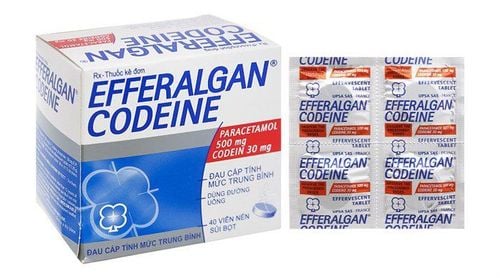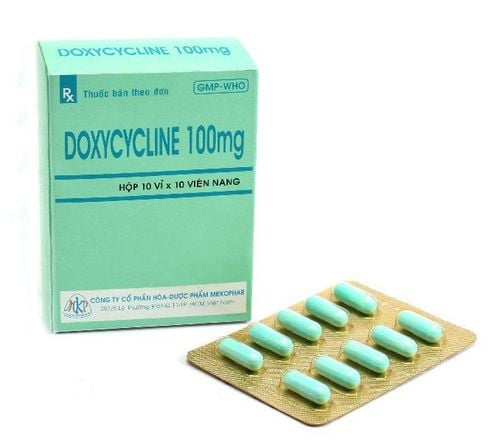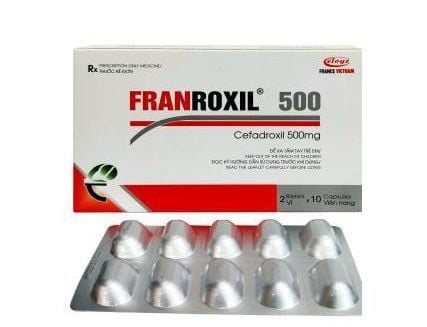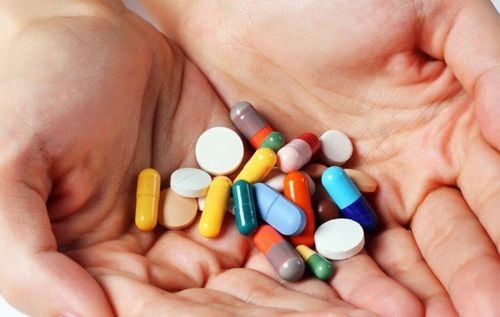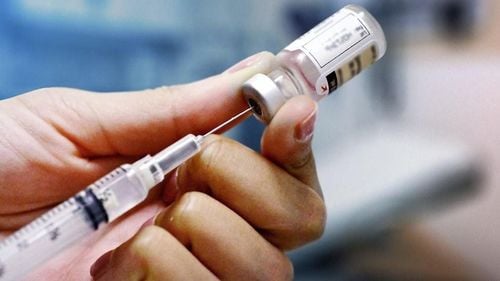This is an automatically translated article.
The drug Cefadromark has the main ingredient is a first-generation cephalosporin antibiotic. The drug has a medium spectrum of activity on gram-positive bacteria and a small number of gram-negative bacteria. Cefadromark antibiotic is indicated in cases of bacterial infections such as respiratory tract, urinary tract, skin and soft tissue.1. What is Cefadromark?
Cefadromark medicine has the composition of Cefadroxil with the strength of 500mg, prepared in capsule form.Cefadroxil is a first generation cephalosporin antibiotic. Cefadroxil is effective against gram-positive bacteria such as staphylococcus (except methicillin-resistant staphylococcus), streptococcus, pneumococcus. The drug is also active against some gram-negative bacteria such as E.coli, Klebsiella pneumoniae, Proteus mirabilis and Shigella.
Cefadroxil after oral administration is rapidly and completely absorbed orally. Food does not affect the absorption of Cefadroxil. After oral administration, the concentration of the drug can remain in the blood for about 12 hours.
2. Indications and contraindications of Cefadromark
Cefadromark is indicated for the treatment of infections caused by susceptible bacteria, including:Acute and chronic urinary tract infections. As nephritis - acute and chronic pyelonephritis, cystitis, urethritis . Respiratory tract infections: tonsillitis, pharyngitis, acute and chronic bronchitis, empyema, pleurisy, laryngitis, otitis media. Skin and soft tissue infections: lymphadenitis, boils, abscesses, cellulitis, ulcers. Osteomyelitis and in septic arthritis. Contraindications:
Cefadromark is contraindicated in patients with a history of hypersensitivity to any of the ingredients or to cephalosporin antibiotics.
3. Dosage and how to use Cefadromark
How to use: The drug is made in oral tablet form, because Cefadroxil is stable to acid, so it can be taken regardless of meals. Administered after meals may help relieve gastrointestinal symptoms that are sometimes present during treatment with oral cephalosporins. Should be taken at certain intervals, to increase the effectiveness of the drug.Dosage:
For adults: Skin and skin structure infections: Take 2 tablets per day, can be used once or divided into 2 times for 10 days. Respiratory tract infections or bone and joint infections: The usual dose for the treatment of mild and moderate infections is 1 tablet and taken twice a day; For severe infections, take 2 tablets/time and 2 times/day for 7-10 days or more depending on the case. Children: Young children should take Cefadroxil as a suspension. Tablets are suitable for children who can swallow whole tablets. The recommended daily dose in children is 30 mg/kg/day in 2 divided doses every 12 hours as indicated. The specific dose is as follows: Children 1 - 6 years old take 250mg / time and 2 times a day. Children over 6 years old take 500mg / time and 2 times a day. Dosage for patients with renal impairment: In patients with renal impairment, the dose of Cefadroxil must be adjusted depending on the creatinine clearance to prevent accumulation of the drug in the body. For adults, the starting dose is 1 g of Cefadroxil orally and the maintenance dose (based on creatinine clearance ml/min/1.73m2) is 500 mg, the interval between 2 doses is calculated as follows: Creatinine clearance 0 - 10ml/min: 36-hour titrated dose interval Creatinine clearance 10-25ml/min: 24-hour dose-adjusted interval Creatinine clearance 25-50ml/min: approx. 12 hours between doses. Patients with creatinine clearance above 50ml/min should be treated as patients with normal renal function.
4. Side effects of the drug Cefadromark
The antibiotic Cefadroxil is very well tolerated in all age groups. However, in some patients, the following side effects may occur when taking the drug:Gastrointestinal disturbances: Nausea and vomiting, diarrhea also occur but are less common. Hypersensitivity reactions: Rarely, rash and urticaria have been reported. Very rarely cause anaphylactic reactions. Other side effects include genital itching, vaginitis, transient neutropenia. Mild side effects usually go away after stopping the medication. However, if the side effects are severe or persistent, you should talk to your doctor for the best advice or go to a medical facility right away.
5. A few things to pay attention to when taking Cefadromark
Use this medicine with caution in patients who are allergic to penicillin antibiotics. Cross-reactive status has been reported. Use with caution in patients with renal failure, patients with gastrointestinal disease. Antibiotics should only be used when there is an infection or there is a high risk of infection. Avoid self-medication to reduce the risk of drug resistance and use when not needed. If the drug does not show a response to symptoms after 3 days of treatment, you need to be re-examined for appropriate treatment. Long-term use of cefadroxil, as with other antibiotics, may result in overgrowth of non-susceptible strains. The patient should be carefully monitored if superinfection occurs, the drug should be discontinued and appropriate treatment instituted. Drug interactions: Cholestyramine binds to the antibiotic Cefadroxil in the intestine, slowing the absorption of the drug; Probenecid may decrease the excretion of cephalosporins and increase blood levels of the drug; Furosemide, aminoglycosides can have a synergistic effect on increasing nephrotoxicity, so the combination should be avoided when not necessary. In addition, you should also tell your doctor about other medications you take to avoid interactions. Storage: Store the medicine in a cool, dry place. Avoid direct light. Keep medicine out of reach of children. In summary, the drug Cefadromark is an antibiotic. You need to use it as directed by your doctor. To ensure safety or to comply with the correct treatment and do not arbitrarily change the dose and duration of use.




